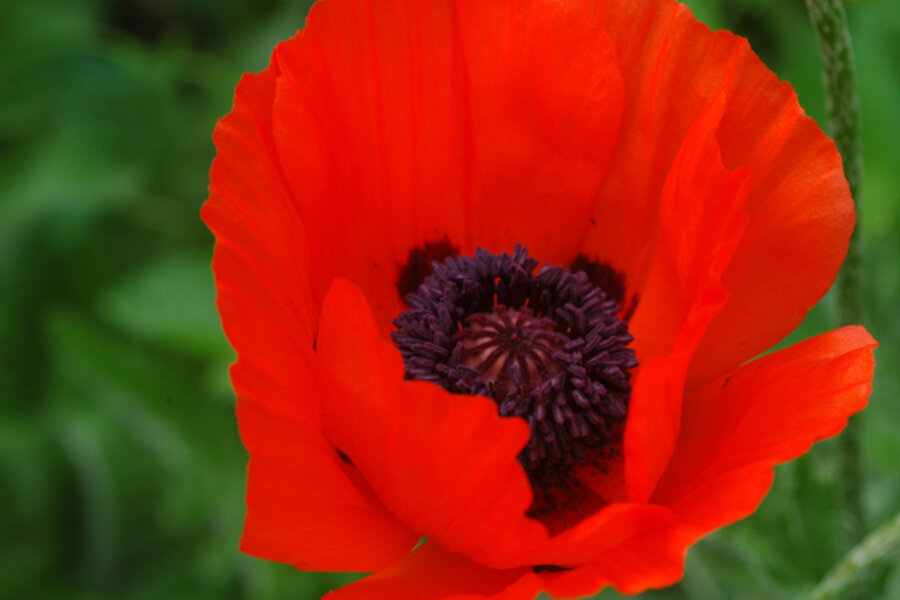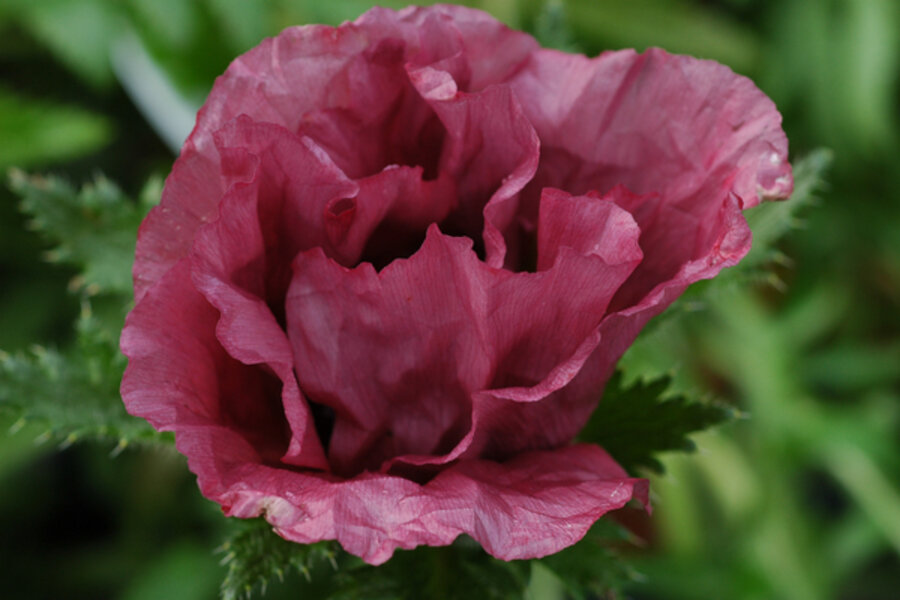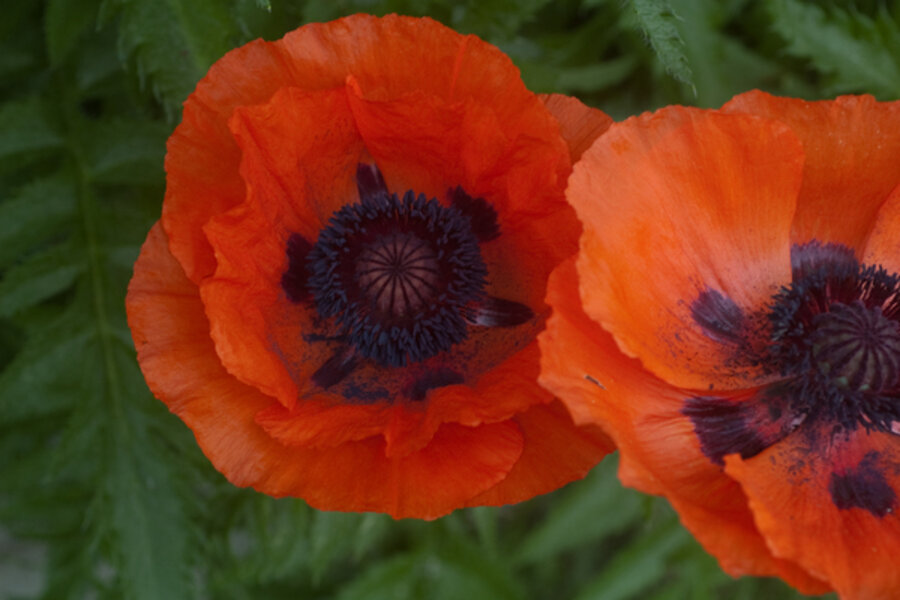Oriental poppies: Glamour girls of the garden
Loading...
Every spring I debate with myself about Oriental poppies, Papaver orientale. If an image doesn’t come immediately to mind, think big and gorgeous and sexy, the kind of bloom that Georgia O’Keefe liked to -- and did -- paint.
My reservation about Oriental poppies isn’t about their visual libidinousness but with their liabilities as garden plants. Their bloom lasts only a moment, they are easily damaged by wind and rain, they have trouble standing up by themselves, and their post-flower foliage is weedy and lasts far too long.
Like movie actresses who rely on their looks, their moment in the sun is brief.
Ideal for those who love color
My small poppy collection includes a traditional orange, which I like least; several reds, including the old-timer ‘Beauty of Livermere’; and the salmon-pink ‘Cedric Morris’. And ‘Patty’s Plum’, a dusky purple cultivar that began as a volunteer in an English compost pile, another good argument for not sending green waste to the local landfill. ['Beauty of Livermere' and 'Patty's Plum' are shown above; to see the second and third photos, click on the arrow at the right base of the first photo.]
There are still more Oriental poppies, including whites and cultivars with doubled petals, ruffled petals, and petals with edges that are fringed or serrated. Whatever the petal color, the flower’s center will be blotched with black or another dark color and contain a large, decorative seed capsule surrounded by dark-colored stamens.
Easy to grow but not to transplant
Maybe I haven’t dug out my poppies because they are so easy to grow, unparticular about soil and site, without serious bug and disease problems, drought-tolerant, and cope with both heat and cold (USDA Zones 3 through 9; Sunset Zones 1–11, 14–21, 30–45). They do best in full sun but remarkably well in partial shade.
Despite their reputation for not liking to have their roots disturbed -- transplanting large plants can be a gamble -- Oriental poppies are easy to propagate from root cuttings. Also, all of today’s Oriental poppies are hybrids, which means their seeds won’t come true, but it is easy to grow plants from seed if you don't expect them to look like the parent plant. [See third photo above.]
Georgia O’Keefe must have set up her easel in the garden because Oriental poppies aren’t ideal flowers for the vase. Open blooms begin to fall apart almost the minute you cut them, but if you’re keen for a bouquet, pick flowers with buds that are ready to open and sear the end of the stems before you place them in water.
After all, who can resist a gorgeous face, in the garden or on the screen?
-----
Karan Davis Cutler is one of more than a dozen garden experts who blog regularly at Diggin’ It. To read more by Karan, click here. She's a former magazine editor and newspaper columnist and the author of scores of garden articles and more than a dozen books, including “Burpee -- The Complete Flower Gardener” and “Herb Gardening for Dummies.” Karan now struggles to garden in the unyieldingly dense clay of Addison County, Vt., on the shore of Lake Champlain, where she is working on a book about gardening to attract birds and other wildlife.









